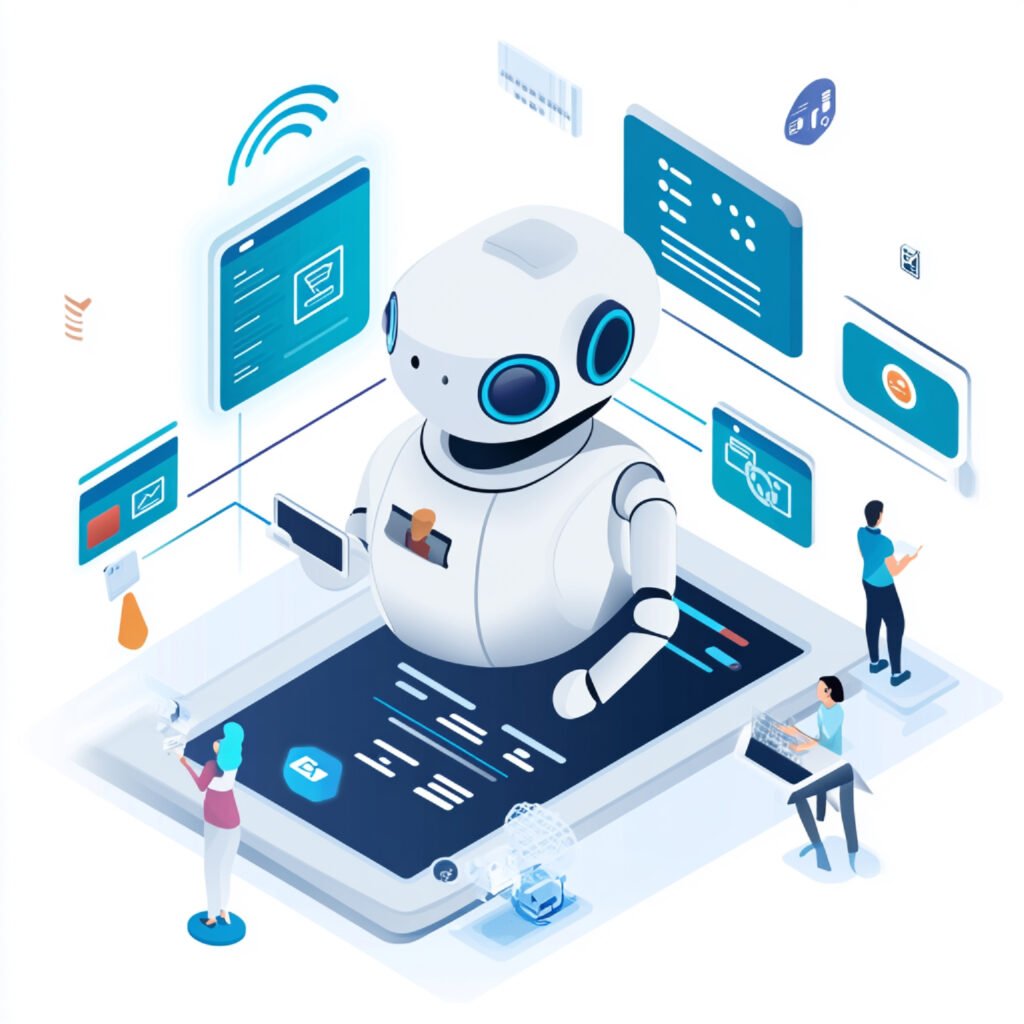
Aishwarya Nair
6 months ago
AI Chatbots Could Become Cybercriminals’ Latest Weapon: A Growing Threat in Cybersecurity
AI chatbots, widely used in industries like customer service, are being exploited by cybercriminals for phishing and spreading malware. Their human-like interactions make attacks more convincing and scalable. As these threats grow, advanced AI-powered cybersecurity is essential to detect and prevent malicious activity, helping businesses and individuals stay protected.
As artificial intelligence (AI) continues to advance, chatbots have emerged as powerful tools in customer service, e-commerce, and healthcare. However, these same AI-driven systems could become a double-edged sword, with experts warning that cybercriminals are now exploiting AI chatbots as their latest weapon in cyberattacks. From phishing schemes to spreading malware, the potential misuse of AI chatbots poses a serious threat to businesses and individuals alike.

The Rise of AI Chatbots in Cybercrime
AI chatbots are designed to simulate human-like conversations, offering a seamless experience in various applications. However, the same qualities that make chatbots effective for businesses can also make them appealing to cybercriminals.
1. Automated Phishing Attacks
One of the most concerning ways cybercriminals are using AI chatbots is through automated phishing attacks. Traditional phishing attacks involve sending deceptive emails or messages to trick individuals into revealing sensitive information, such as passwords or financial details. With the help of AI chatbots, these attacks can be scaled up significantly.
Cybercriminals can deploy AI chatbots to engage in real-time conversations with potential victims, making the phishing attempts more convincing. Unlike static emails, chatbots can adapt to the responses of their targets, providing tailored responses that increase the likelihood of success. For example, an AI chatbot posing as a customer service representative might ask users to verify their identity by entering sensitive login credentials.
2. Spreading Malware
Another growing concern is the use of AI chatbots to distribute malware. Chatbots can be integrated into websites, messaging apps, or social media platforms, where unsuspecting users may interact with them. Once trust is established, the chatbot can encourage users to download files, which may contain malicious software.
In some cases, AI chatbots can disguise these malicious downloads as legitimate updates or software patches. This approach allows cybercriminals to target large numbers of users simultaneously, making it more difficult for traditional cybersecurity measures to keep pace.
3. Social Engineering Tactics
AI chatbots can also enhance traditional social engineering tactics. Social engineering is the psychological manipulation of individuals to divulge confidential information. AI chatbots, with their human-like conversational abilities, can be used to gain trust and manipulate victims into disclosing sensitive data, such as corporate secrets or personal information.
Unlike human attackers, AI chatbots can engage with multiple targets simultaneously, increasing the efficiency of cyberattacks. Moreover, the bots can operate 24/7, making them a persistent threat that is difficult to detect.
The Growing Need for AI-Powered Cybersecurity
As cybercriminals become more sophisticated in their use of AI chatbots, the cybersecurity landscape must evolve to combat these emerging threats. Traditional security measures, such as firewalls and antivirus software, may not be enough to protect against the unique challenges posed by AI-driven attacks.
AI-powered cybersecurity solutions are increasingly seen as the key to combating AI-enabled threats. These systems use machine learning algorithms to detect and respond to malicious activity in real time. By analyzing patterns and identifying abnormal behaviors, AI-powered security tools can flag suspicious chatbot interactions and neutralize potential threats before they escalate.
Preparing for the Future of Cybersecurity
The rise of AI chatbots in cybercrime underscores the importance of proactive cybersecurity strategies. Businesses and individuals must remain vigilant, implementing best practices such as multi-factor authentication (MFA), regular software updates, and employee training on how to recognize phishing and other scams.
At the same time, governments and tech companies must collaborate to create regulations and guidelines that prevent the misuse of AI technology. Ethical AI development and responsible use will be crucial in ensuring that AI continues to be a force for good, rather than a tool for malicious actors.

Conclusion: The Double-Edged Sword of AI Chatbots
AI chatbots are revolutionizing industries and improving user experiences, but they also pose a growing threat in the hands of cybercriminals. From automated phishing attacks to spreading malware, the potential misuse of AI chatbots requires immediate attention from the cybersecurity community. As AI continues to evolve, so must our defenses, with AI-powered cybersecurity becoming a vital tool in the fight against digital crime.
By staying informed and adopting advanced security measures, businesses and individuals can protect themselves from the dangers posed by AI-driven cyberattacks, ensuring that the promise of AI remains beneficial for society at large. Read more